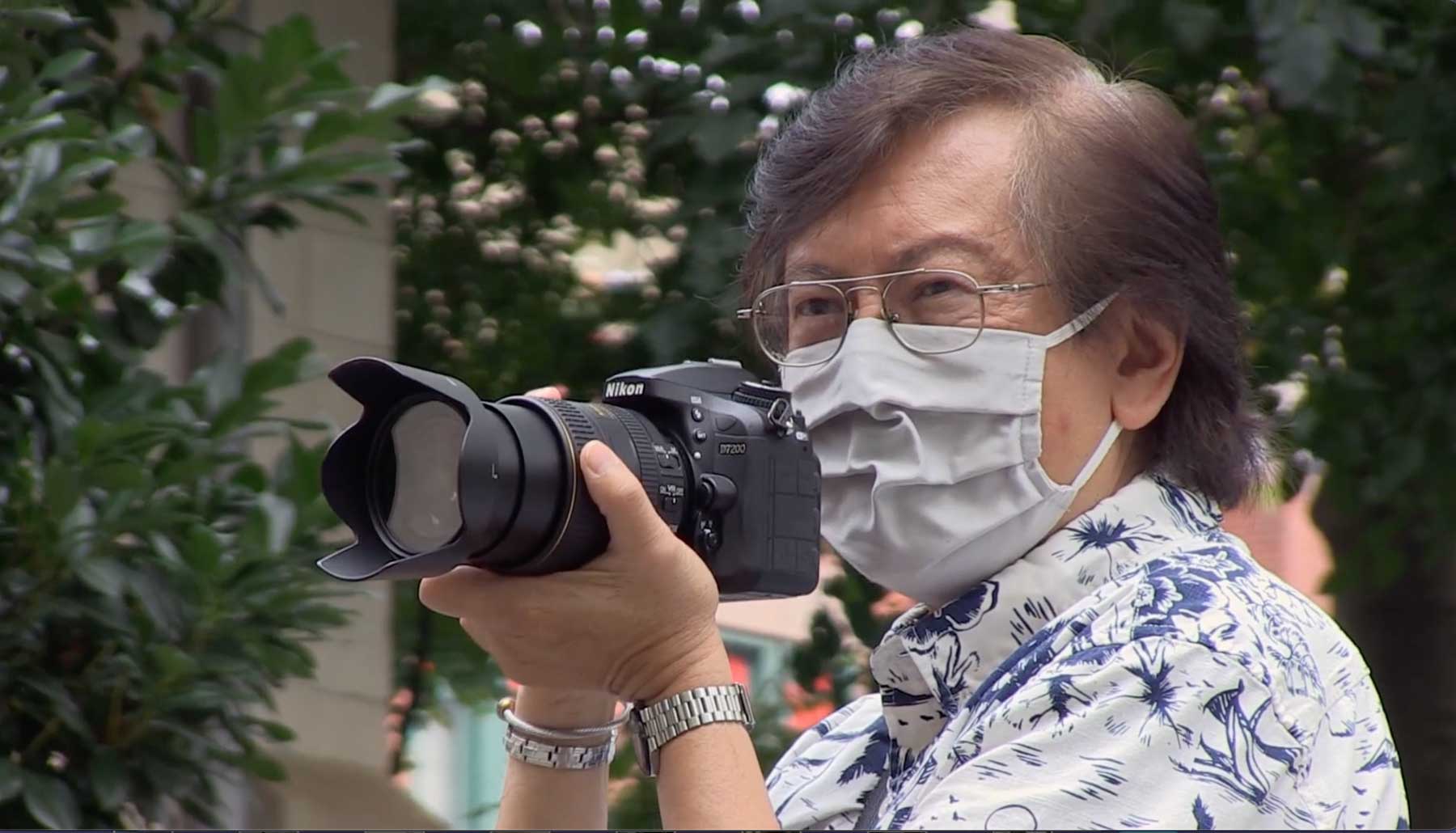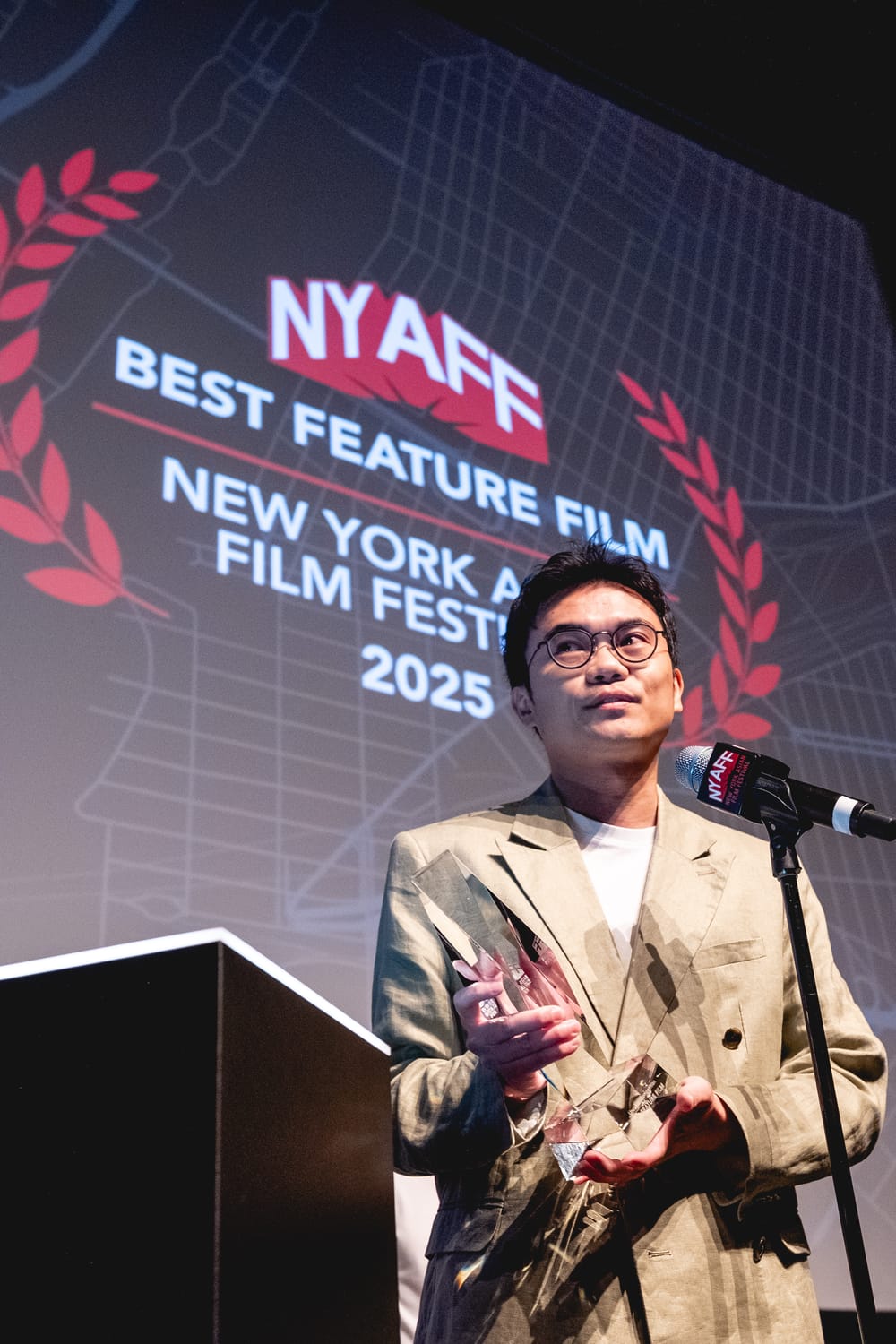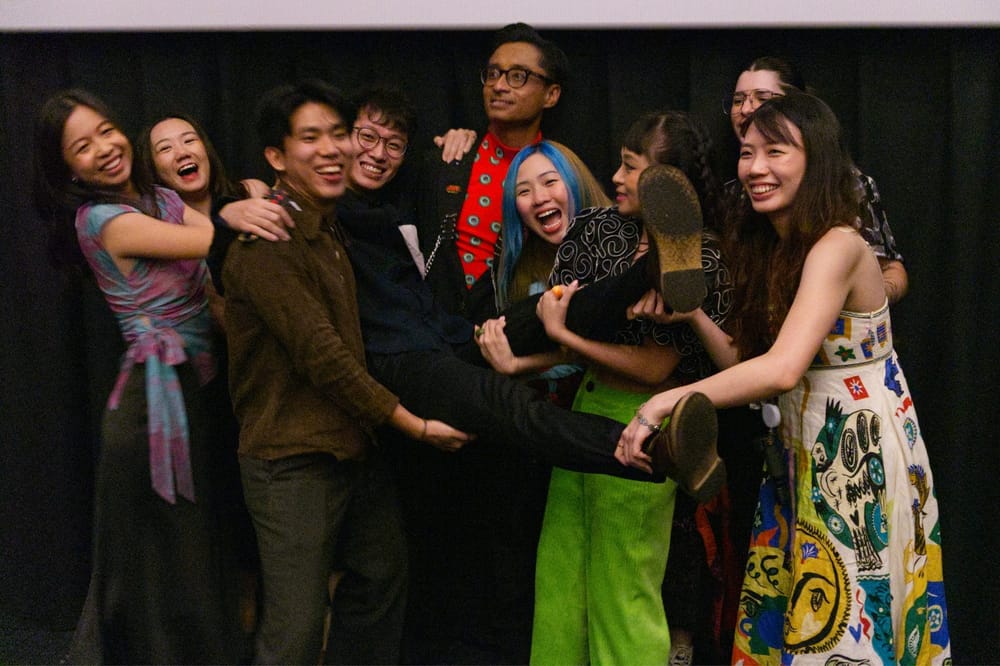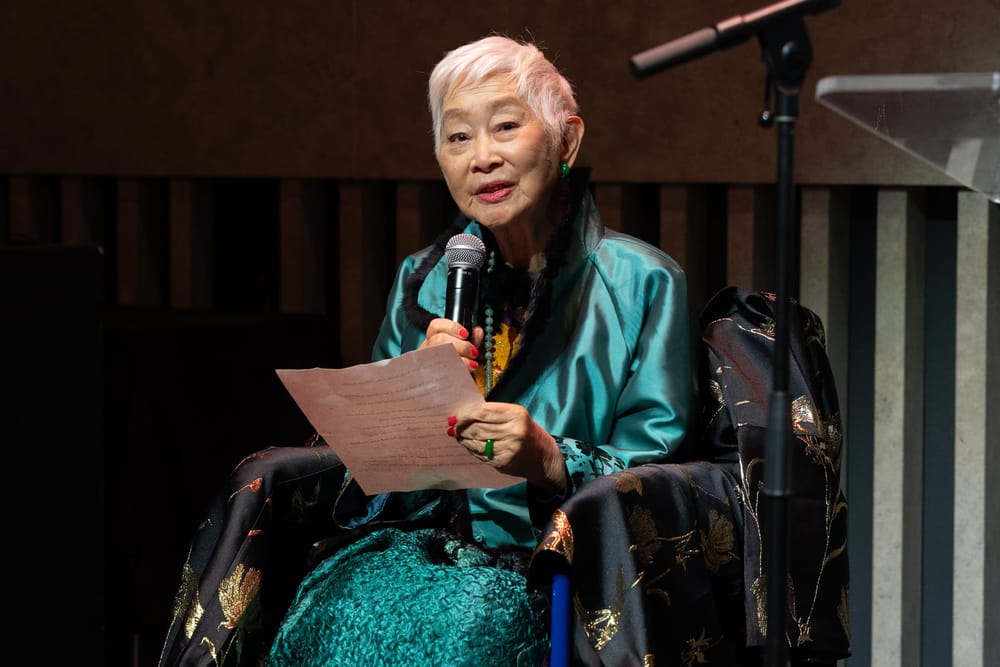By Ning Chang
“Photographic Justice: The Corky Lee Story” is a new documentary from director Jennifer Takaki that follows acclaimed Asian American photographer Corky Lee through the final two decades of his life.
Directed and edited with a stunning tenderness and love for Lee and the vibrant Asian American community he documented, “Photographic Justice” is about the importance of knowing and preserving your own history, and the people whose life calling makes it possible to pass it down.
Known as the unofficial Asian American photographer laureate, Corky first picked up a camera after college as the Asian American movement was coming into focus in the mid-20th century, and it seemed like wherever Asian American history was being made, Corky was there.
The documentary captures Corky Lee’s truly dizzying career, spanning from the protests against police brutality and the pre-1965 bachelors’ society in New York City’s Chinatown to the uncertain post-9/11 landscape and the COVID-19 pandemic, briskly contextualizing enormous social and political shifts from the perspective of the man behind the camera.
Being Asian American, especially in New York, means that somehow, somewhere, your path may have crossed with Corky Lee’s. Personally, I’ve never had the pleasure of meeting Corky, but I remember first learning about him while writing archive poetry about Chinese railroad workers. During my research, I found his famous recreation of the Golden Spike ceremony marking the completion of the Central Pacific Railroad in 1869.
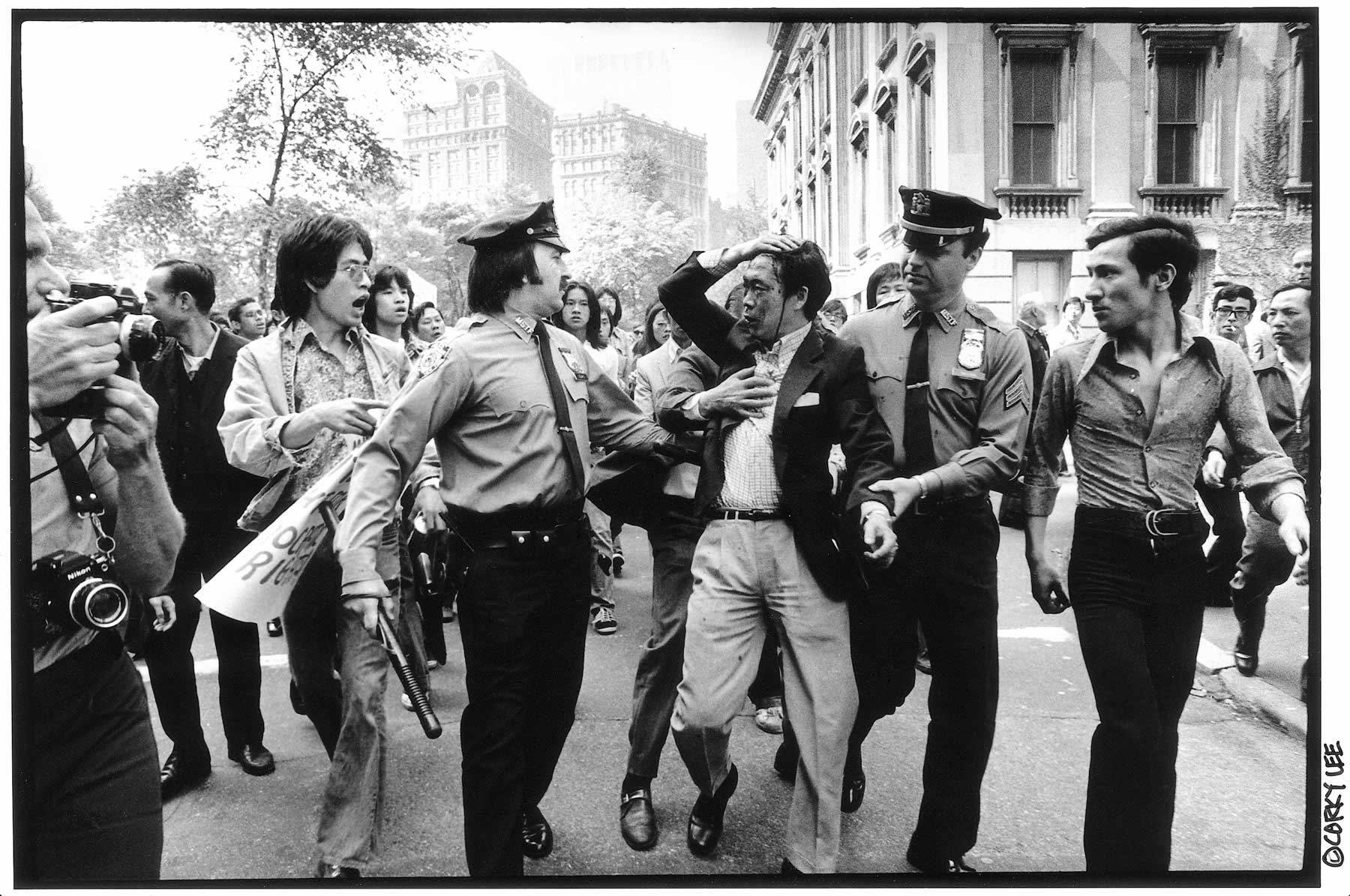
Witnessing the practice of reasserting oneself in a history that sought to exclude you, and doing justice to archival photography, had a profound impact on me. It felt like a full-circle moment to see this documentary featuring Corky’s coverage of a student strike and an occupied Hamilton Hall on Columbia University’s campus in 1996, which ultimately succeeded in creating the ethnic studies department where I took classes to learn about this community history.
When I spoke with Takaki over Zoom, she made sure to emphasize the importance of knowing your history and how empowering and necessary it is to have documentarians like Corky that provide context for younger generations to know themselves. “I feel like the film has many different levels of storytelling,” Takaki says. “It shows not only Corky documenting, but me documenting Corky, and also just the importance of that family history and the community history.”
She adds, “At one point, I did actually go to ABC/CBS and I was looking in their archive to see if they had footage (to use in the documentary). I’d put “Asian Americans and Vietnam War,” and that didn’t come up with anything.” The wealth of archives she found of Asian American political involvement from the mid-20th century and beyond came from archives of community organizers, from DCTV’s attics, from family collections and from the oeuvre of Corky himself. “So it’s really our own communities that are telling these stories.”
This dedication to storytelling and documenting was felt strongly by none other than Corky himself—a takeaway of the film is simply answering the great question on everybody’s minds, “How does he do it all?”
Takaki guides us through an impressive year in Corky’s life with camera in hand, taking a year of photos of Asian America celebrating Lunar New Year to Korean New Year, commemorating Diwali and Eid, following the Philippine Independence Day Parade and Obon festivities.
Paraphrasing from Joanne Lee in the film, Corky was so constant, he was invisible. Part of this film works to push back against this invisibility and omnipresence, digging into his rich life beyond his “side gig” as an iconic fixture of the community. Recounting his family history and the interactions of his personal life, “Photographic Justice” works to understand Corky Lee the man, his sacrifices for the cause of recording a community, and the drive that fueled him across a historic and underappreciated 50-year career.
One of the great joys of the film is simply following Corky around and watching him shoot. Not only does he walk up and down the familiar streets of Chinatown, but you can see how he works to traverse great distances across the past and the future. Takaki and others in the film reference the unflappable “Corkyism” that permeates his self-assured process, tapping into years of experience to know what photos are meaningful to take for Asian American history and posterity.
Walking down Bayard Street, Corky points out a building where he took one of his first photos documenting the haphazard mailboxes of a run-down building, part of the landscape he encountered as a community and tenant organizer, unpacking the layers that displayed the do-it-yourself culture of an ethnoburb, the densely inhabited housing, and the immigration dynamics before 1965. In another scene, he snaps a photo of sewing machines being carted out of a warehouse, seeing in it the demise of the garment industry in Chinatown and the long-standing unions that had supported generations of family members with their benefits.
“Corky just understood the importance of documenting, and he knew well ahead of everybody else what he was doing,” Takaki says. “It took me so long to understand why he did what he did. Corky had such an insight on history, not just American history but the history of his personal journey, his own community, and that’s how he took every photo.”
Corky passed away in 2021 from COVID-19, contracted from his continued dedication to documenting the impact of the pandemic on the Asian American community. The film itself, made in the aftermath of this loss, feels almost like passing the torch on to new generations.
In one of the final shots of the film, Takaki covers the funeral procession as it winds through Chinatown. Up and down the street are young Chinese-American photographers, cameras in hand, capturing the scene.
“I feel that Corky is going to provide pride and confidence and a sense of belonging for many generations to come, especially generations whose identity and culture is under attack these days.” Takaki says. “And I think Corky will show them it’s important to know your history, your family history, the greater history; you’ll then be able to make an impact in the future wherever your role may be.”
Watching on film Corky’s familiar paths across the neighborhood, watching it change year after year in his photographs and across the twenty-year period of this documentary, serves as an invaluable record. I personally enjoyed seeing the changes to the storefronts and the dynamic landscapes that I still traverse to this day.
From walking hand in hand with my parents down Mosco Street, when I was six, to now, waiting in the endlessly long line at Shanghai 21 before heading to catch the film at DCTV’s Firehouse, it’s been a joy to look up and see a new change, a sign added to the street: Corky Lee Way.


